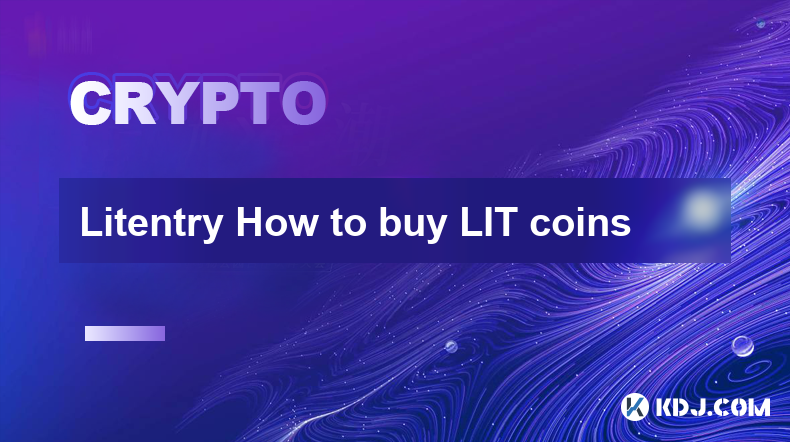-
 Bitcoin
Bitcoin $107,792.7836
-1.83% -
 Ethereum
Ethereum $2,490.3334
-3.99% -
 Tether USDt
Tether USDt $1.0003
0.00% -
 XRP
XRP $2.2177
-2.39% -
 BNB
BNB $652.5191
-1.50% -
 Solana
Solana $146.6253
-4.04% -
 USDC
USDC $1.0001
0.01% -
 TRON
TRON $0.2832
-1.14% -
 Dogecoin
Dogecoin $0.1623
-5.82% -
 Cardano
Cardano $0.5701
-5.05% -
 Hyperliquid
Hyperliquid $38.6009
-4.85% -
 Sui
Sui $2.8604
-5.95% -
 Bitcoin Cash
Bitcoin Cash $487.6897
-2.30% -
 Chainlink
Chainlink $13.0565
-5.05% -
 UNUS SED LEO
UNUS SED LEO $9.0735
0.43% -
 Avalanche
Avalanche $17.6635
-5.16% -
 Stellar
Stellar $0.2382
-2.81% -
 Toncoin
Toncoin $2.7498
-4.12% -
 Shiba Inu
Shiba Inu $0.0...01134
-4.91% -
 Litecoin
Litecoin $86.4080
-3.46% -
 Hedera
Hedera $0.1526
-4.69% -
 Monero
Monero $313.9315
-1.80% -
 Dai
Dai $1.0000
0.00% -
 Polkadot
Polkadot $3.3426
-5.85% -
 Ethena USDe
Ethena USDe $1.0001
-0.02% -
 Bitget Token
Bitget Token $4.4044
-3.80% -
 Uniswap
Uniswap $6.9000
-9.33% -
 Pepe
Pepe $0.0...09552
-5.65% -
 Aave
Aave $263.0698
-6.29% -
 Pi
Pi $0.4693
-4.76%
Litentry How to buy LIT coins
To acquire LIT Coins, users can create an account on reputable exchanges like Binance or Coinbase, deposit funds, and place a buy order to purchase LIT Coins and store them securely in hardware wallets or software wallets depending on their risk tolerance.
Dec 26, 2024 at 09:09 pm

Key Points:
- Understanding LIT Coins and Their Utility
- Identifying Reputable Exchanges to Purchase LIT Coins
- Step-by-Step Guide to Acquiring LIT Coins
- Secure Storage and Management of LIT Coins
- Accessibility of LIT Coins on Various Platforms
How to Buy LIT Coins: A Comprehensive Guide
1. Understanding LIT Coins and Their Utility:
LIT Coins, the native tokens of Litentry, play a crucial role within the Litentry ecosystem. Litentry is a decentralized identity and credit data aggregation protocol that allows users to manage and share their identity and data securely and privately. LIT Coins are primarily used for:
- Decentralized Identity (DID): LIT Coins enable users to create and manage their Decentralized Identities (DIDs), a tamper-proof record of their identity stored on the blockchain.
- Data Markets: LIT Coins facilitate the exchange of identity and data on Litentry's data markets, empowering users to monetize their data while maintaining control over its privacy.
- Governance: LIT Coins grant holders voting rights, allowing them to participate in the governance of the Litentry protocol and influence its future development.
2. Identifying Reputable Exchanges to Purchase LIT Coins:
Before acquiring LIT Coins, it is essential to identify reputable exchanges that offer secure and reliable trading platforms. Some of the most trusted exchanges for purchasing LIT Coins include:
- Binance
- Coinbase
- Huobi
- KuCoin
- Gate.io
These exchanges adhere to strict industry standards, providing users with the necessary security measures and customer support to ensure a smooth and secure trading experience.
3. Step-by-Step Guide to Acquiring LIT Coins:
Once you have chosen a reputable exchange, follow these steps to acquire LIT Coins:
- Create an Account: Register with the exchange by providing your email address, creating a password, and completing KYC (Know Your Customer) procedures as required by law.
- Fund Your Account: Transfer funds to your exchange account via available payment methods, such as bank transfers, credit cards, or other supported cryptocurrencies.
- Place a Buy Order: Navigate to the LIT trading pair (e.g., LIT/USDT) and determine the current market price. Input the desired amount of LIT Coins you wish to purchase and place a buy order.
- Confirm Your Purchase: Review the order details and confirm the transaction. Once the order is filled, the LIT Coins will be credited to your exchange wallet.
4. Secure Storage and Management of LIT Coins:
After acquiring LIT Coins, it is imperative to store them securely to protect them from theft or unauthorized access. Depending on your preferences and risk tolerance, consider the following options:
- Hardware Wallets: Dedicated devices designed specifically for storing cryptocurrencies. Ledger and Trezor are reputable hardware wallet manufacturers.
- Software Wallets: Applications like Trust Wallet and MetaMask provide software-based storage solutions for cryptocurrency management.
- Exchange Wallets: Some exchanges offer the option to store your LIT Coins within their platform. While convenient, this method carries higher risks if the exchange encounters security breaches.
5. Accessibility of LIT Coins on Various Platforms:
LIT Coins are available on various platforms, extending their usability beyond exchanges:
- Litentry Network: Integrate with the Litentry network to leverage the full range of decentralized identity and data management services.
- Decentralized Applications (dApps): Utilize LIT Coins within dApps that support Litentry's DID and data marketplace functionalities.
- Non-Custodial Exchanges: Trade LIT Coins on platforms that enable direct peer-to-peer transactions without relying on a centralized intermediary.
FAQs:
- What is the maximum supply of LIT Coins? 100,000,000 LIT
- What blockchain is LIT Coins built on? Polkadot, Kusama, and Songbird
- What use cases do LIT Coins have? Decentralized identity management, data sharing, and protocol governance
- How can I stake my LIT Coins? Participate in the Litentry network as a validator or delegate your tokens to existing validators for passive income
- Where can I find more information about LIT Coins? Visit the official Litentry website, join community forums, or consult industry news and research reports for in-depth analysis
Disclaimer:info@kdj.com
The information provided is not trading advice. kdj.com does not assume any responsibility for any investments made based on the information provided in this article. Cryptocurrencies are highly volatile and it is highly recommended that you invest with caution after thorough research!
If you believe that the content used on this website infringes your copyright, please contact us immediately (info@kdj.com) and we will delete it promptly.
- Bitcoin's Pattern Break: Are HODLers the Key to the Next Surge?
- 2025-07-04 18:50:12
- Bitcoin Price, Trump's Bill, and the $150K Dream: A NYC Take
- 2025-07-04 19:50:12
- Ethereum, LILPEPE, and the July Bounce: Will Pepe Steal ETH's Thunder?
- 2025-07-04 19:10:12
- Binance Institutional Loans: Unlocking 4x Leverage and Zero Interest for Whales
- 2025-07-04 19:15:12
- Bitcoin Bull Run: Analysts Eye Peak in Late 2025?
- 2025-07-04 19:20:13
- Pepe Indicators, Bullish Forecast: Can the Meme Coin Rally?
- 2025-07-04 19:25:12
Related knowledge

How to customize USDT TRC20 mining fees? Flexible adjustment tutorial
Jun 13,2025 at 01:42am
Understanding USDT TRC20 Mining FeesMining fees on the TRON (TRC20) network are essential for processing transactions. Unlike Bitcoin or Ethereum, where miners directly validate transactions, TRON uses a delegated proof-of-stake (DPoS) mechanism. However, users still need to pay bandwidth and energy fees, which are collectively referred to as 'mining fe...

USDT TRC20 transaction is stuck? Solution summary
Jun 14,2025 at 11:15pm
Understanding USDT TRC20 TransactionsWhen users mention that a USDT TRC20 transaction is stuck, they typically refer to a situation where the transfer of Tether (USDT) on the TRON blockchain has not been confirmed for an extended period. This issue may arise due to various reasons such as network congestion, insufficient transaction fees, or wallet-rela...

How to cancel USDT TRC20 unconfirmed transactions? Operation guide
Jun 13,2025 at 11:01pm
Understanding USDT TRC20 Unconfirmed TransactionsWhen dealing with USDT TRC20 transactions, it’s crucial to understand what an unconfirmed transaction means. An unconfirmed transaction is one that has been broadcasted to the blockchain network but hasn’t yet been included in a block. This typically occurs due to low transaction fees or network congestio...

How to check USDT TRC20 balance? Introduction to multiple query methods
Jun 21,2025 at 02:42am
Understanding USDT TRC20 and Its ImportanceUSDT (Tether) is one of the most widely used stablecoins in the cryptocurrency market. It exists on multiple blockchain networks, including TRC20, which operates on the Tron (TRX) network. Checking your USDT TRC20 balance accurately is crucial for users who hold or transact with this asset. Whether you're sendi...

What to do if USDT TRC20 transfers are congested? Speed up trading skills
Jun 13,2025 at 09:56am
Understanding USDT TRC20 Transfer CongestionWhen transferring USDT TRC20, users may occasionally experience delays or congestion. This typically occurs due to network overload on the TRON blockchain, which hosts the TRC20 version of Tether. Unlike the ERC20 variant (which runs on Ethereum), TRC20 transactions are generally faster and cheaper, but during...

The relationship between USDT TRC20 and TRON chain: technical background analysis
Jun 12,2025 at 01:28pm
What is USDT TRC20?USDT TRC20 refers to the Tether (USDT) token issued on the TRON blockchain using the TRC-20 standard. Unlike the more commonly known ERC-20 version of USDT (which runs on Ethereum), the TRC-20 variant leverages the TRON network's infrastructure for faster and cheaper transactions. The emergence of this version came as part of Tether’s...

How to customize USDT TRC20 mining fees? Flexible adjustment tutorial
Jun 13,2025 at 01:42am
Understanding USDT TRC20 Mining FeesMining fees on the TRON (TRC20) network are essential for processing transactions. Unlike Bitcoin or Ethereum, where miners directly validate transactions, TRON uses a delegated proof-of-stake (DPoS) mechanism. However, users still need to pay bandwidth and energy fees, which are collectively referred to as 'mining fe...

USDT TRC20 transaction is stuck? Solution summary
Jun 14,2025 at 11:15pm
Understanding USDT TRC20 TransactionsWhen users mention that a USDT TRC20 transaction is stuck, they typically refer to a situation where the transfer of Tether (USDT) on the TRON blockchain has not been confirmed for an extended period. This issue may arise due to various reasons such as network congestion, insufficient transaction fees, or wallet-rela...

How to cancel USDT TRC20 unconfirmed transactions? Operation guide
Jun 13,2025 at 11:01pm
Understanding USDT TRC20 Unconfirmed TransactionsWhen dealing with USDT TRC20 transactions, it’s crucial to understand what an unconfirmed transaction means. An unconfirmed transaction is one that has been broadcasted to the blockchain network but hasn’t yet been included in a block. This typically occurs due to low transaction fees or network congestio...

How to check USDT TRC20 balance? Introduction to multiple query methods
Jun 21,2025 at 02:42am
Understanding USDT TRC20 and Its ImportanceUSDT (Tether) is one of the most widely used stablecoins in the cryptocurrency market. It exists on multiple blockchain networks, including TRC20, which operates on the Tron (TRX) network. Checking your USDT TRC20 balance accurately is crucial for users who hold or transact with this asset. Whether you're sendi...

What to do if USDT TRC20 transfers are congested? Speed up trading skills
Jun 13,2025 at 09:56am
Understanding USDT TRC20 Transfer CongestionWhen transferring USDT TRC20, users may occasionally experience delays or congestion. This typically occurs due to network overload on the TRON blockchain, which hosts the TRC20 version of Tether. Unlike the ERC20 variant (which runs on Ethereum), TRC20 transactions are generally faster and cheaper, but during...

The relationship between USDT TRC20 and TRON chain: technical background analysis
Jun 12,2025 at 01:28pm
What is USDT TRC20?USDT TRC20 refers to the Tether (USDT) token issued on the TRON blockchain using the TRC-20 standard. Unlike the more commonly known ERC-20 version of USDT (which runs on Ethereum), the TRC-20 variant leverages the TRON network's infrastructure for faster and cheaper transactions. The emergence of this version came as part of Tether’s...
See all articles

























































































